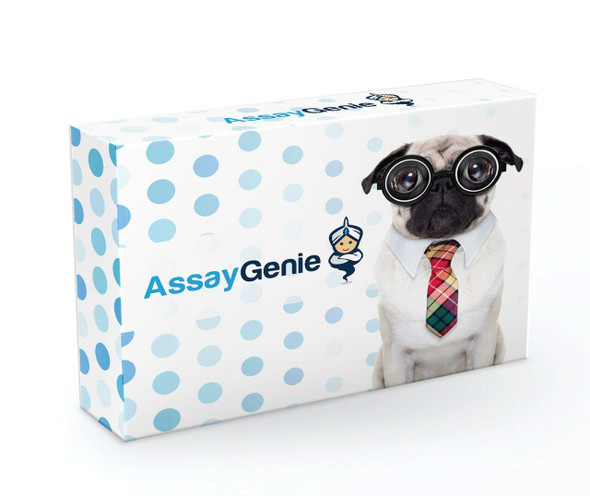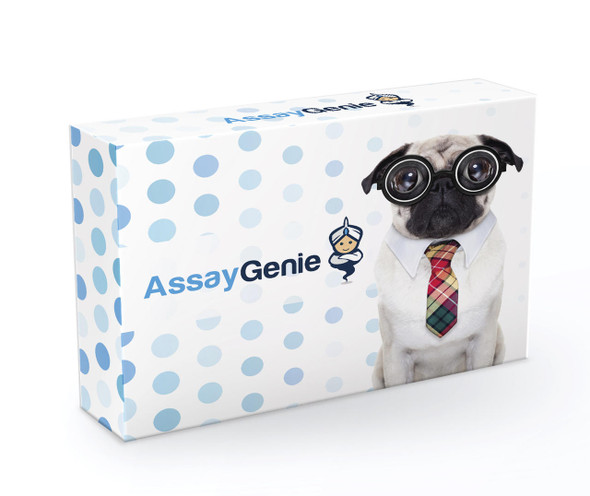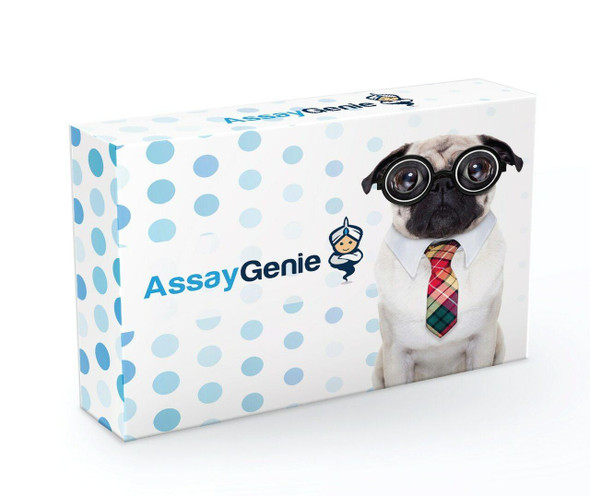Description
Bovine IL-1 alpha DIY ELISA Kit
The Bovine IL-1 Alpha ELISA Kit is a highly accurate and reliable tool for measuring levels of Interleukin-1 Alpha in bovine serum, plasma, and cell culture supernatants. With its high sensitivity and specificity, this kit is ideal for researchers looking to study the role of IL-1 Alpha in inflammation, immune responses, and other biological processes.IL-1 Alpha is a pro-inflammatory cytokine that plays a key role in the regulation of immune responses and inflammation. Dysregulation of IL-1 Alpha has been implicated in various diseases, including arthritis, inflammatory bowel disease, and autoimmune disorders.
By accurately measuring IL-1 Alpha levels, researchers can gain valuable insights into the pathogenesis of these diseases and potentially identify new therapeutic targets.Overall, the Bovine IL-1 Alpha ELISA Kit offers researchers a valuable tool for studying the role of IL-1 Alpha in bovine health and disease, providing reliable and reproducible results for a wide range of research applications.
| Product Name: | Bovine IL-1 alpha DIY ELISA |
| Product Code: | KES0008 |
| Species: | Bovine |
| Target: | IL-1 alpha |
| Synonyms: | IL1A, IL-1A, IL1, IL1-ALPHA, IL1F1 |
| Application: | ELISA |
| ELISA Type: | DIY ELISA Kit |
| Size: | 10 Plates |
| Shipping: | Room temperature |
| Storage: | Stable for up to twelve months from date of receipt at 2-8°C. |
| Description | Usage | Quantity |
| Anti-Bovine IL-1 alpha Polyclonal Antibody | Capture Antibody | 100 µg |
| Biotinylated Anti-Bovine IL-1 alpha Polyclonal Antibody | Detection Antibody | 50 µg |
| Bovine IL-1 alpha Recombinant Protein | Standard | 5 µg |
| Reagent | Suggested Formulation |
| DPBS: | 0.008M sodium phosphate, 0.002M potassium phosphate, 0.14M sodium chloride, 0.01M potassium chloride, pH 7.4 |
| 96-well ELISA Plate: | Clear, flat-bottom, high-binding 96-well plate, 8-wells per strip, 350 µL per well (ELISA Plates: KESAP003) |
| Standard and Sample Diluent: | The optimal Standard and Sample Diluent will need to be determined for each sample type to obtain optimal recovery and linearity. The appropriate Standard and Sample Diluent will mimic the sample's response to a known quantity of protein standard and will provide linear results when diluted. Often a 1:4 dilution of the sample in Reagent Diluent will provide acceptable recovery and linearity. |
| Reagent Diluent and Blocking Buffer: | 4% BSA in DPBS, 0.2 µm filtered |
| Wash Buffer: | 0.05% Tween®-20 in DPBS |
| Streptavidin-HRP: | Enzymatic reagent to react with biotinylated detection antibody (Streptavidin-HRP: KESAP002) |
| Substrate: | 3,3',5,5'-tetramethylbenzidine (TMB) Substrate (ELISA Accessory Pack: KESAP001) |
| Stop Solution: | 0.18 M Sulfuric Acid (ELISA Accessory Pack: KESAP001) |
| Plate Sealer: | Adhesive film to prevent evaporation |
*Note: Protocols are specific to each batch/lot. For the correct instructions please follow the protocol included in your kit.
| Step | Procedure |
| 1. | Prepare Capture Antibody in DPBS at desired working concentration. |
| 2. | Add 100 µL of Capture Antibody Working Solution to appropriate wells. |
| 3. | Cover plate with Plate Sealer and incubate at room temperature (20-25°C) for 12-24 hours. |
| 4. | Empty Capture Antibody Working Solution from plate. Blot plate onto paper towels or other absorbent material. |
| 5. | Add 100 µL of Blocking Buffer to appropriate wells. |
| 6. | Cover plate with Plate Sealer and incubate at room temperature for 1-3 hours. |
| 7. | Empty Blocking Buffer from plate. Blot plate onto paper towels or other absorbent material. |
| 8. | Prepare Standard and sample as desired with Standard and Sample Diluent. |
| 9. | Add 100 µL of Standard or sample to appropriate wells. Note: Run each Standard or sample in duplicate. |
| 10. | Cover plate with Plate Sealer and incubate at room temperature for 1 hour. |
| 11. | Wash plate FOUR times with Wash Buffer. Note: Gently squeeze the long sides of plate frame before washing to ensure all strips remain securely in the frame. Empty plate contents. Use a squirt wash bottle to vigorously fill each well completely with 1X Wash Buffer, then empty plate contents. Repeat procedure three additional times for a total of FOUR washes. Blot plate onto paper towels or other absorbent material. |
| 12. | Prepare Detection Antibody in Reagent Diluent at desired working concentration. |
| 13. | Add 100 µL of Detection Antibody Working Solution to each well. |
| 14. | Cover plate with Plate Sealer and incubate at room temperature for 1 hour. |
| 15. | Wash plate FOUR times with Wash Buffer as described in step 11. |
| 16. | Prepare Streptavidin-HRP in Reagent Diluent at desired working concentration. |
| 17. | Add 100 µL of Streptavidin-HRP Working Solution to each well. |
| 18. | Cover plate with Plate Sealer and incubate at room temperature for 30 minutes. |
| 19. | Wash plate FOUR times with Wash Buffer as described in step 11. |
| 20. | Add 100 µL of TMB Substrate Solution to each well. |
| 21. | Develop the plate in the dark at room temperature for 30 minutes or as desired. Note: Do NOT cover plate with Plate Sealer. |
| 22. | Stop reaction by adding 100 µL of Stop Solution to each well. |
| 23. | Measure absorbance on a plate reader at 450 nm. |
The Bovine IL-1 alpha DIY ELISA kit from Assay Genie can assay for IL-1 alpha in the following samples: serum, blood, plasma, cell culture supernatant and other related supernatants and tissues. Bovine IL-1 alpha DIY ELISA Kit from Assay Genie allows researchers to develop their own ELISA plates for IL-1 alpha using our unique combination of capture and detection antibodies.
Each Bovine IL-1 alpha DIY ELISA Kit contains capture antibody, standard, and detection antibody for development of an IL-1 alpha ELISA. IL-1 alpha antibodies in this kit have been determined to function in an ELISA with the IL-1 alpha standard provided. Optimal buffers, concentrations, incubation times, incubation temperatures, and methods for the ELISA have not been determined and require optimisation for the development of this kit. A working knowledge of ELISA is strongly recommended.






